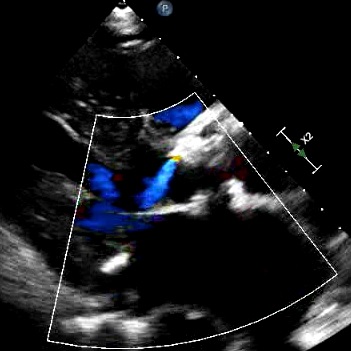The recent ACC.19 Scientific Sessions (March 16-19, New Orleans) saw the presentation of two very anticipated clinical trials evaluating outcomes after transcatheter aortic valve replacement (TAVR) in patients with severe aortic stenosis and low risk of death with surgery. The PARTNER 3 and EVOLUT trials compared the outcomes of TAVR with those of SAVR in low risk patients with severe aortic stenosis, utilizing a third-generation balloon-expandable valve or a self-expanding bioprosthesis, respectively
These studies prove at the very least that TAVR is equivalent to surgery in the treatment of low-risk patients with aortic stenosis, thus setting the stage for broadening of the indications for TAVR and a significant increase in volume of these procedures in the future. As a result, sonographers and echocardiographers should become familiar with the echocardiographic evaluation of transcatheter implanted aortic valves, and the differences and nuances compared to surgical valves, which may require additional views and measurements, as well as different hemodynamic parameters for normalcy.
Thankfully, the literature in this subject continues to expand, and we can recommend the following papers and guidelines released within the past year:
- The newly released ASE Guidelines for the Evaluation of Valvular Regurgitation After Percutaneous Valve Repair or Replacement (in press at the time of this post)
- Hahn RT, Leipsic J, Douglas PS, et al. Comprehensive Echocardiographic Assessment of Normal Transcatheter Valve Function. JACC Cardiovasc Imaging. 2019 Jan;12(1):25-34.
- Hahn RT, Nicoara A, Kapadia S, et al. Echocardiographic Imaging for Transcatheter Aortic Valve Replacement. J Am Soc Echocardiogr. 2018 Apr;31(4):405-433.
On a separate note, but coincidentally with the recent ACC.19 meeting, the FDA approved the MitraClip Delivery System (manufactured by Abbott Vascular) for use in symptomatic heart failure patients with moderate-to-severe or severe functional mitral regurgitation, supported by the results of the recently published COAPT trial. This was accompanied by a press release on March 14. Proper quantification and grading of the severity of mitral regurgitation adhering to published ASE standards is key for patient selection, and again, the recently released ASE Guidelines for the Evaluation of Valvular Regurgitation After Percutaneous Valve Repair or Replacement provide us additional guidance for the assessment of patients after this type of intervention.

